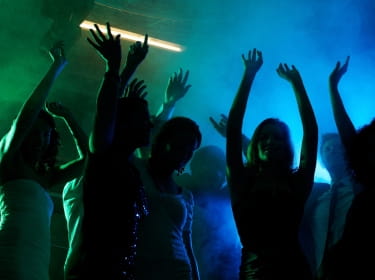Ecstasy Summary of Harmful Effects

The Bottom Line
Ecstasy, an illegal drug of abuse, is a stimulant related to amphetamine. An ecstasy overdose can cause high blood pressure, a rapid heart rate, seizures, dehydration, a dangerously high body temperature, and death. An ecstasy user who develops medical distress should be seen promptly in an emergency room.

The Full Story
Ecstasy, an illegal drug of abuse, is sometimes called a "party drug" or a "rave drug". It is a stimulant related to amphetamine, sometimes taken during all-night dances or weekend-long parties. Users say it gives them energy, improves their mood, and helps them to relax. The drug is also known as MDMA (methylenedioxymethamphetamine), Adam, Eve, and a frequently-changing list of other names.
Ecstasy affects several brain chemicals called neurotransmitters. The purpose of a neurotransmitter is to pass signals from one nerve cell to the next. Such nerve signals are essential for survival. If a drug or chemical causes too much of a neurotransmitter to be released, the “sending” nerve can run out of the neurotransmitter. Also, the “receiving” nerve, or receptor, is over-stimulated. A cascade of events can occur; the effects depend on the specific neurotransmitter.
Neurotransmitters affected by ecstasy are serotonin, dopamine, and norepinephrine. Most of the effects are on serotonin. Serotonin is important for controlling mood, one’s sense of well-being, sleep, appetite, memory, and learning.
Because it is a stimulant, an ecstasy overdose can cause high blood pressure, a rapid heart rate, and seizures. Taking ecstasy while exercising – for example, dancing for a long time in a hot room – has caused dehydration and dangerously high body temperature, even death. Ecstasy users may have higher rates of anxiety and depression than non-users.
Troubling new research about ecstasy indicates that it might cause long-lasting serotonin toxicity. A small study of young women compared groups who did and did not use ecstasy. Brain imaging studies of the young women who used ecstasy showed harmful changes in serotonin receptors. This confirmed previous animal studies, in which animals given the drug developed toxic effects in the brain that lasted at least for several years.
Other possible problems relate to the ecstasy preparations themselves. Ecstasy is a widely-available illegal drug. Because it is illegal, there are no standards for its preparation. Pills sold as ecstasy may contain MDMA, the advertised ingredient – or they may not. A furtive chemist could put any number of contaminants into a dose of ecstasy or “ecstasy”.
And whether the pills contain ecstasy or contaminants, there is a risk of interactions with other drugs the user may be taking. For example, taking ecstasy while on antidepressants known as MAO inhibitors can cause the rapid onset of a fatal high fever. (Some MAO inhibitors are phenelzine/Nardil®, selegiline/Zelapar®, and tranylcypromine/Parnate®.)
An ecstasy user who develops medical distress should be seen promptly in an emergency room. Someone who is feverish, dehydrated, and has a fast heart rate cannot be allowed to “sleep it off”. A dangerously high temperature can develop quickly and lead to liver and kidney damage, effects on the heart and brain, and death.
Questions? Call Poison Control any time. Experts will answer the phone 24 hours a day. Call 1-800-222-1222.
Rose Ann Gould Soloway, RN, BSN, MSEd, DABAT emerita
Clinical Toxicologist
Poisoned?
Call 1-800-222-1222 or
Prevention Tips
- The only real prevention is not to use this drug.
- The emergency room is the only safe place for someone having symptoms from Ecstasy.
This Really Happened
Seven patients took (MDMA) in the same nightclub, and all presented to the emergency room on the same day with MDMA poisoning.
- Three of them, a 20-year-old man, a 22-year-old man, and an 18-year-old man, were found collapsed in or around the nightclub.
- The 20-year-old was in a coma on arrival in the emergency room and was receiving mechanical ventilation. His blood pressure (BP) was 60/50 mmHg, heart rate (HR) 130 beats per minute and his rectal temperature (T) was 109.2 degrees Fahrenheit (F). Despite aggressive body cooling, artificial ventilation, and cardiac resuscitation, the patient died an hour after arrival in the emergency room.
- The 22-year-old was found collapsed after falling 15 feet through a glass roof into a stairwell. He was also in a coma. In the emergency room his BP was 80/40 mmHg, HR 140 beats per minute, and rectal T 101.2 degrees F. He was treated with artificial ventilation, body cooling, and drugs to maintain his BP. His temperature remained elevated at 100.4-101.8 degrees F for 18 hours after admission. His liver and kidney function deteriorated despite continuous hemofiltration (removal of waste products from the blood by passing it through filters) and maximum intravenous drug support of his BP. The patient died 58 hours after admission.
- The 18-year-old, according to friends, had ingested 5 ecstasy tablets and a gram of powder identified as “speed.” On arrival in the emergency room he was agitated and vomiting with a BP of 105/40 mmHg, HR of 170 beats per minute, and rectal T of 106.9 degrees F. Treatment included mechanical ventilation, cooling, and medication to maintain his BP. He required artificial ventilation for 10 days. His body temperature remained elevated at 100.4-102.2 degrees F for 7 days. The powder called “speed” by his friends was found to contain MDMA. He was discharged from the hospital after 32 days.
- The other 4 patients, a 23-year-old man, an 18-year-old man, an 18-year-old woman, and a 17-year-old boy, all presented on their own to the emergency room. Except for the 17-year-old, all had significant symptoms of MDMA poisoning, such as elevated HR, BP and T, but all returned to a healthy condition after 2-8 hours of treatment and observation.
Reference: Greene, S.L., Dargan, P.I., O’Connor, N., Jones, A.L., & Kerins, M. (2003).Multiple toxicity from 3, 4-methylenedioxymethamphetamine (“Ecstasy”). American Journal of Emergency Medicine, 21, 121-124.
For More Information
The Partnership at DrugFree.org offers information for parents about many abused drugs, including ecstasy.References
National Institute on Drug Abuse. DrugFacts: MDMA (Ecstasy or Molly). Bethesda (MD): National Institute on Drug Abuse (US); [accessed 2014 Jan 12].Di Iorio CR, Watkins TJ, Dietrich MS, Cao A, Blackford JU, Rogers B, Ansari MS, Baldwin RN, Li R, Kessler RM, Salomon RM, Benningfield M, Cowan RL. Evidence for chronically altered serotonin function in the cerebral cortex of female 3,4-methylenedioxymethamphetamine polydrug users. Arch Gen Psychiatry. 2011 Dec 5. [Epub ahead of print]. E1-11. doi:10.1001/archgenpsychiatry.2011.156
Poisoned?
Call 1-800-222-1222 or
Prevention Tips
- The only real prevention is not to use this drug.
- The emergency room is the only safe place for someone having symptoms from Ecstasy.
This Really Happened
Seven patients took (MDMA) in the same nightclub, and all presented to the emergency room on the same day with MDMA poisoning.
- Three of them, a 20-year-old man, a 22-year-old man, and an 18-year-old man, were found collapsed in or around the nightclub.
- The 20-year-old was in a coma on arrival in the emergency room and was receiving mechanical ventilation. His blood pressure (BP) was 60/50 mmHg, heart rate (HR) 130 beats per minute and his rectal temperature (T) was 109.2 degrees Fahrenheit (F). Despite aggressive body cooling, artificial ventilation, and cardiac resuscitation, the patient died an hour after arrival in the emergency room.
- The 22-year-old was found collapsed after falling 15 feet through a glass roof into a stairwell. He was also in a coma. In the emergency room his BP was 80/40 mmHg, HR 140 beats per minute, and rectal T 101.2 degrees F. He was treated with artificial ventilation, body cooling, and drugs to maintain his BP. His temperature remained elevated at 100.4-101.8 degrees F for 18 hours after admission. His liver and kidney function deteriorated despite continuous hemofiltration (removal of waste products from the blood by passing it through filters) and maximum intravenous drug support of his BP. The patient died 58 hours after admission.
- The 18-year-old, according to friends, had ingested 5 ecstasy tablets and a gram of powder identified as “speed.” On arrival in the emergency room he was agitated and vomiting with a BP of 105/40 mmHg, HR of 170 beats per minute, and rectal T of 106.9 degrees F. Treatment included mechanical ventilation, cooling, and medication to maintain his BP. He required artificial ventilation for 10 days. His body temperature remained elevated at 100.4-102.2 degrees F for 7 days. The powder called “speed” by his friends was found to contain MDMA. He was discharged from the hospital after 32 days.
- The other 4 patients, a 23-year-old man, an 18-year-old man, an 18-year-old woman, and a 17-year-old boy, all presented on their own to the emergency room. Except for the 17-year-old, all had significant symptoms of MDMA poisoning, such as elevated HR, BP and T, but all returned to a healthy condition after 2-8 hours of treatment and observation.
Reference: Greene, S.L., Dargan, P.I., O’Connor, N., Jones, A.L., & Kerins, M. (2003).Multiple toxicity from 3, 4-methylenedioxymethamphetamine (“Ecstasy”). American Journal of Emergency Medicine, 21, 121-124.
